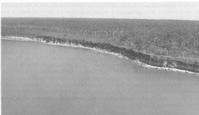


Chapter 10
I 1. Introduction
II 2. The Role Of Technology
III 3. Some Highlights Of Australian Minerals Technology
i Gold
ii Copper
iii Lead-zinc-silver
iv Technology in iron ore mining
v Iron and steel technology
vi Nickel
vii Mineral sands
viii Bauxite, alumina, aluminium
IV 4. Other Technological Achievements (in brief)
V 5. Export Of Technology
VI 6. Education And Research
VII 7. The Scientific Societies
VIII 8. Conclusion
References
Index
Search
Help
Contact us

Bauxite, alumina, aluminium
While a newcomer to the aluminium industry, Australia has a prominent position in world terms. In the 33 years since its establishment the industry has grown to the extent that it now provides 35 per cent of the western world's bauxite (from four producers with total capacity 40 Mt/yr); 30 per cent of the alumina (from six producers of capacity 10 Mt/yr) and 7 per cent of the primary metal (from six producers of capacity 1 Mt/yr). Proven reserves of bauxite at 1500 Mt and competitive energy sources should ensure the future of the industry, especially as additional large deposits of bauxite have been identified in northern WA.The need of an industry was clearly demonstrated during the Second World War, at which time no bauxite deposits were known, and the first alumina and aluminium complex in Bell Bay, Tas., used Malaysian bauxite in a conventional combination of the Bayer dissolution process, to which the Malaysian bauxite responded at relatively low temperature, and the Hall-Heroult electrolytic reduction process, using carbon anodes of the soderberg type. The initial capacity of the alumina plant, which commenced production in 1955, was 25,000 t/yr from which 11,0001 of aluminium were produced. In 1962 the output of the plant, now owned and operated by a partnership led by Comalco, was increased to 54,000 t/yr of aluminium through upgrading of the smelter, including adoption of the pre-baked anode technology in a second potline and later in the original plant by conversion of the soderberg anode technology. The conversion was carried out without allowing the furnaces to cool -the first changeover of its kind in the world. By 1965 the capacity was 54,000 t/yr, and the bauxite feed to the alumina plant now included bauxite from the Weipa deposit, which had been discovered in a classic search by a CRA geologist in 1955, and brought into production in 1961. Bauxite from Weipa was to become also the feed for an alumina refinery established by a consortium of Comalco, Kaiser, Alcan and Pechiney at Gladstone, Qld. which commenced production in 1967 with initial capacity 600,000 t/yr, later increased to 2.8 Mt/yr.

The Weipa bauxite as a whole differed from the Malaysian in that the latter was predominantly the trihydrate form (gibbsite) which yielded to low temperature dissolution, whereas the Weipa product contained some 10 per cent of monohydrate (boehmite) which required higher temperature. The situation was met by selective mining for trihydrate at Weipa during the remaining life of the Bell Bay alumina plant, which was closed in 1974, whilst the aluminium smelter continued production, using alumina from the new Gladstone refinery.
Further development of the smelter improved efficiencies in operation, including installation of a computer control system in 1971 for operations of the potlines. The control system, developed at Bell Bay, was one of the first in the world and provided for automatic voltage and feed control. Anode effect suppression was also included. Further expansion of the smelter has brought the capacity to 125,000 t/yr.
Organisations in Australian Science at Work - Alcan Australia Ltd; Comalco Ltd; Kaiser Aluminium and Chemical Corporation; Pechiney Australia Pty Ltd
 |
Australian Academy of Technological Sciences and Engineering |  |
© 1988 Print Edition pages 764 - 765, Online Edition 2000
Published by Australian Science and Technology Heritage Centre, using the Web Academic Resource Publisher
http://www.austehc.unimelb.edu.au/tia/727.html